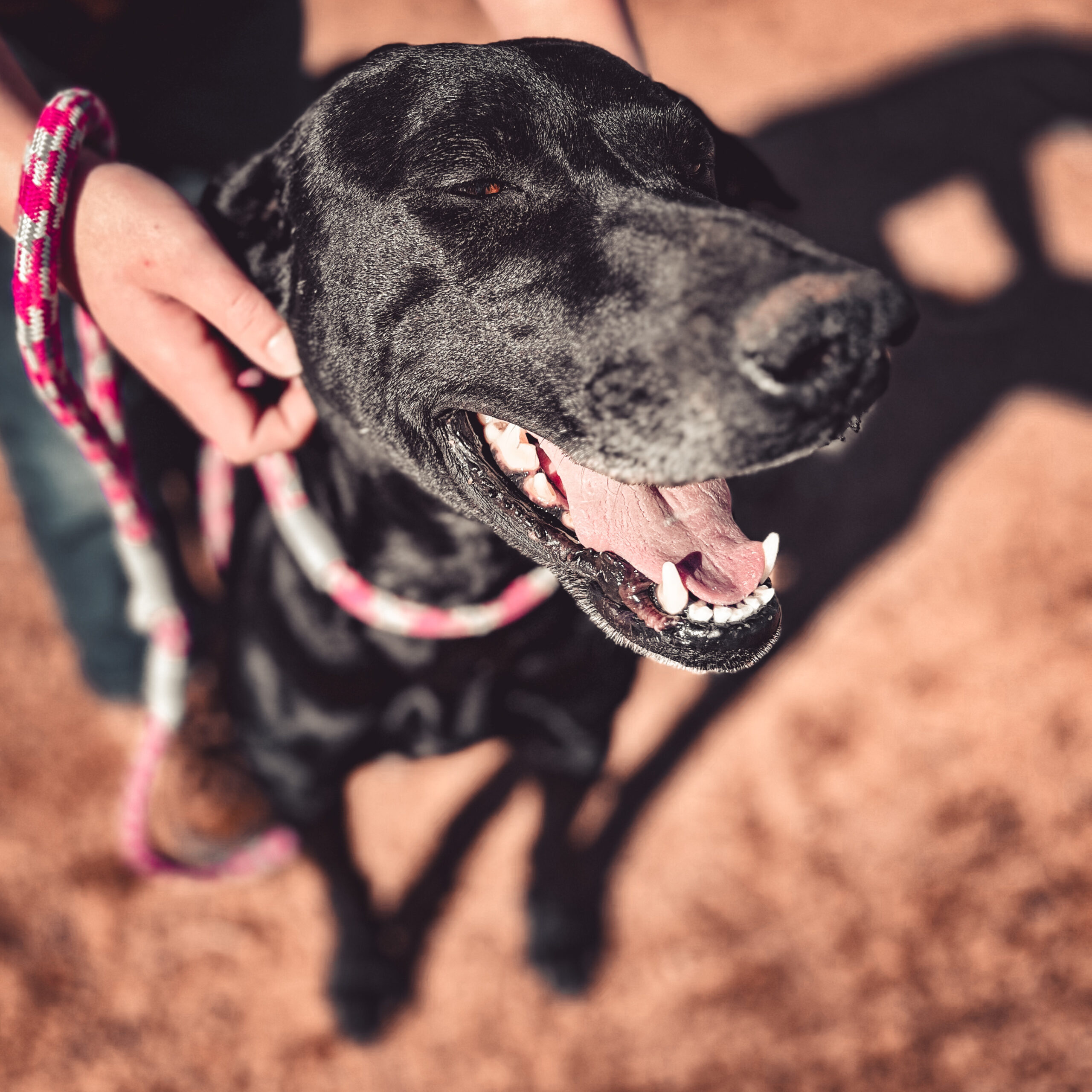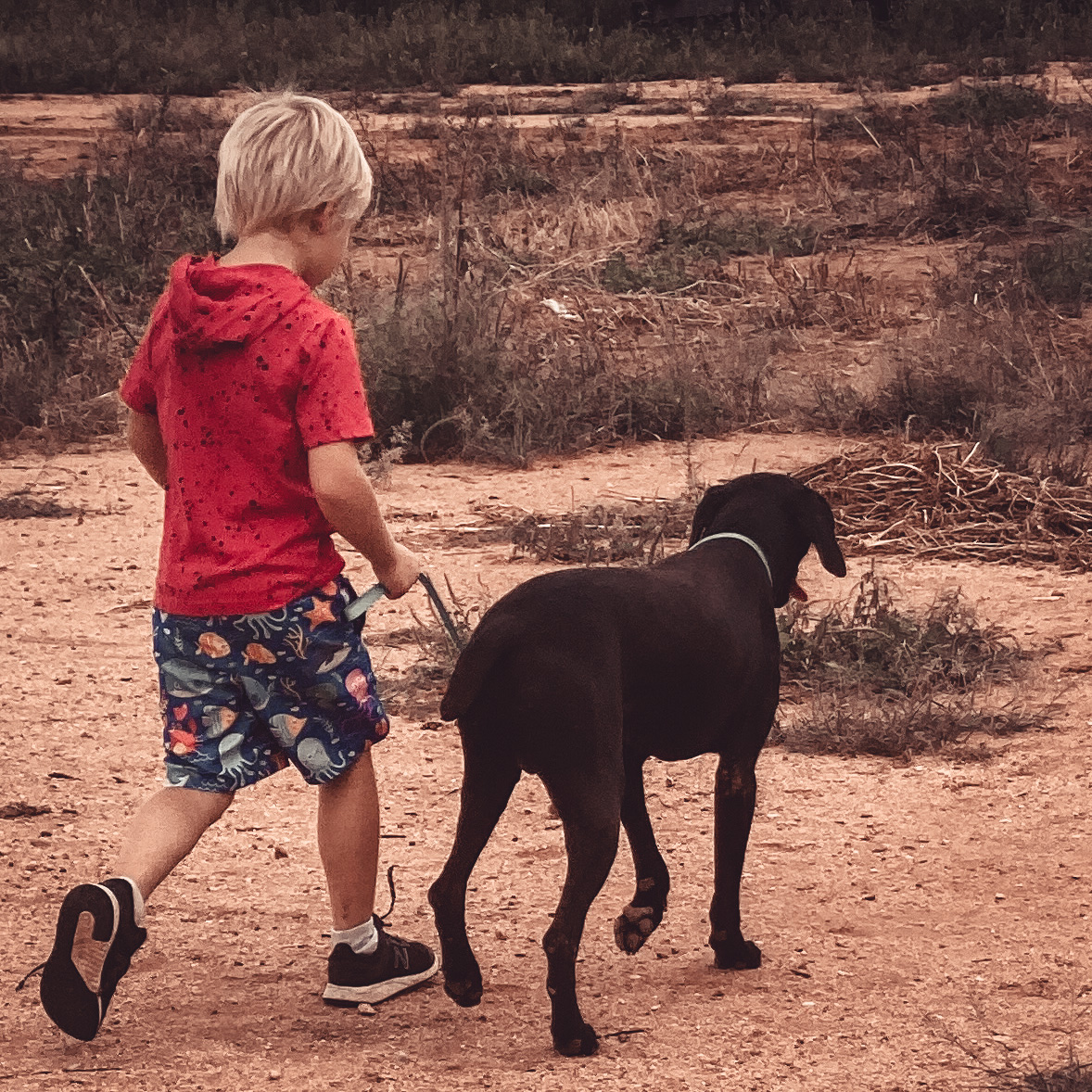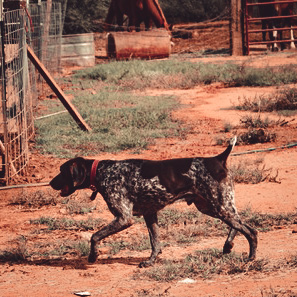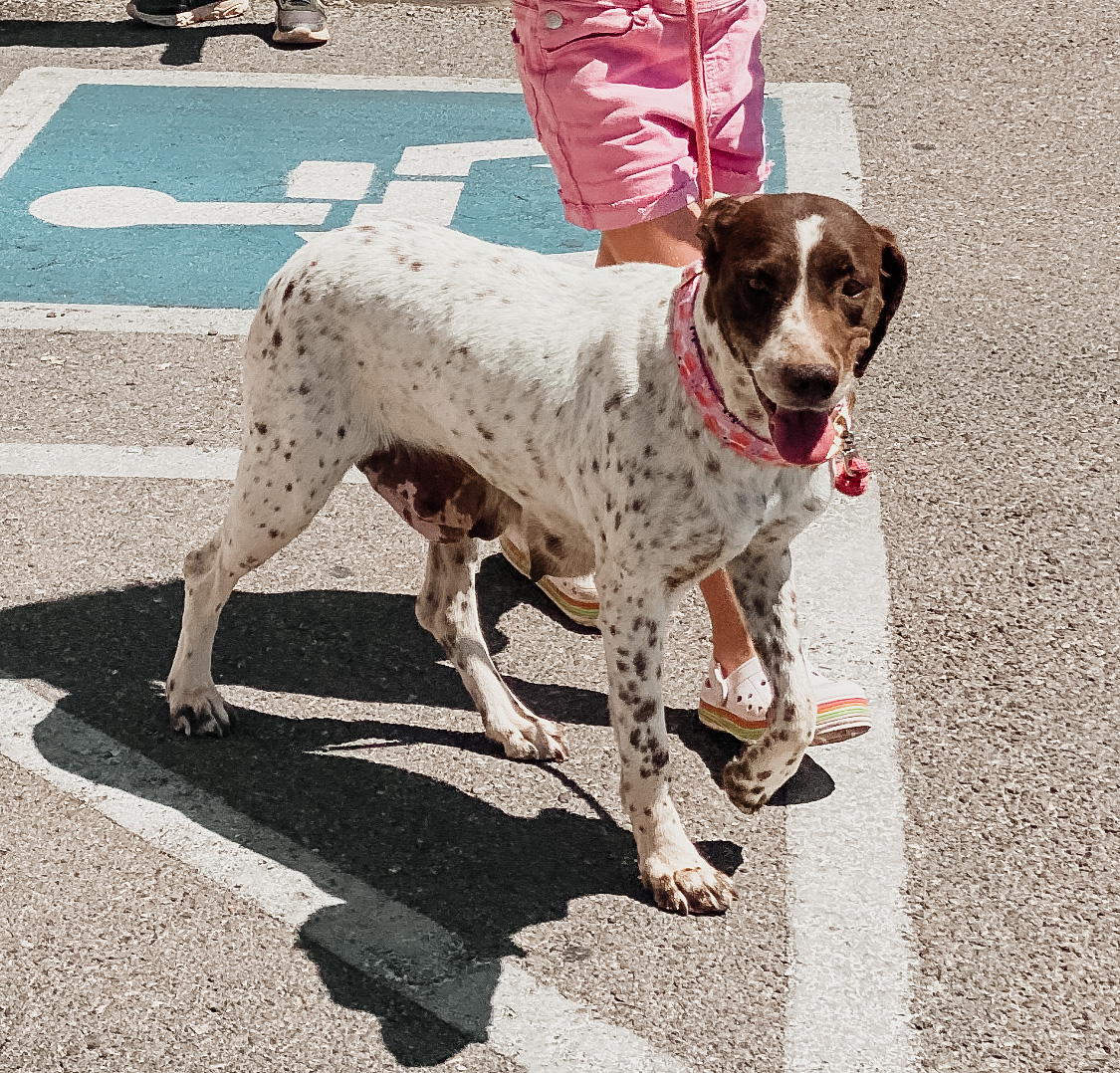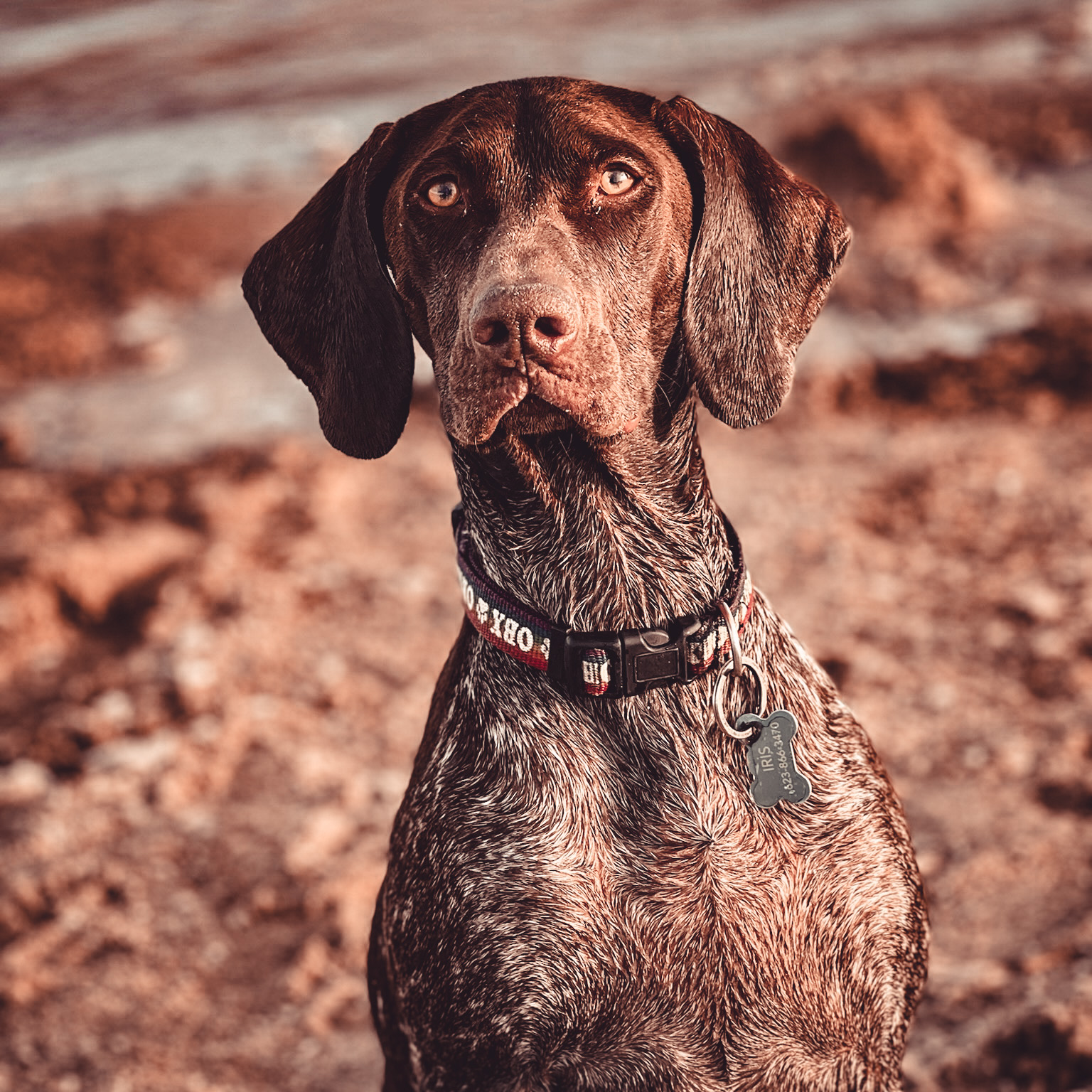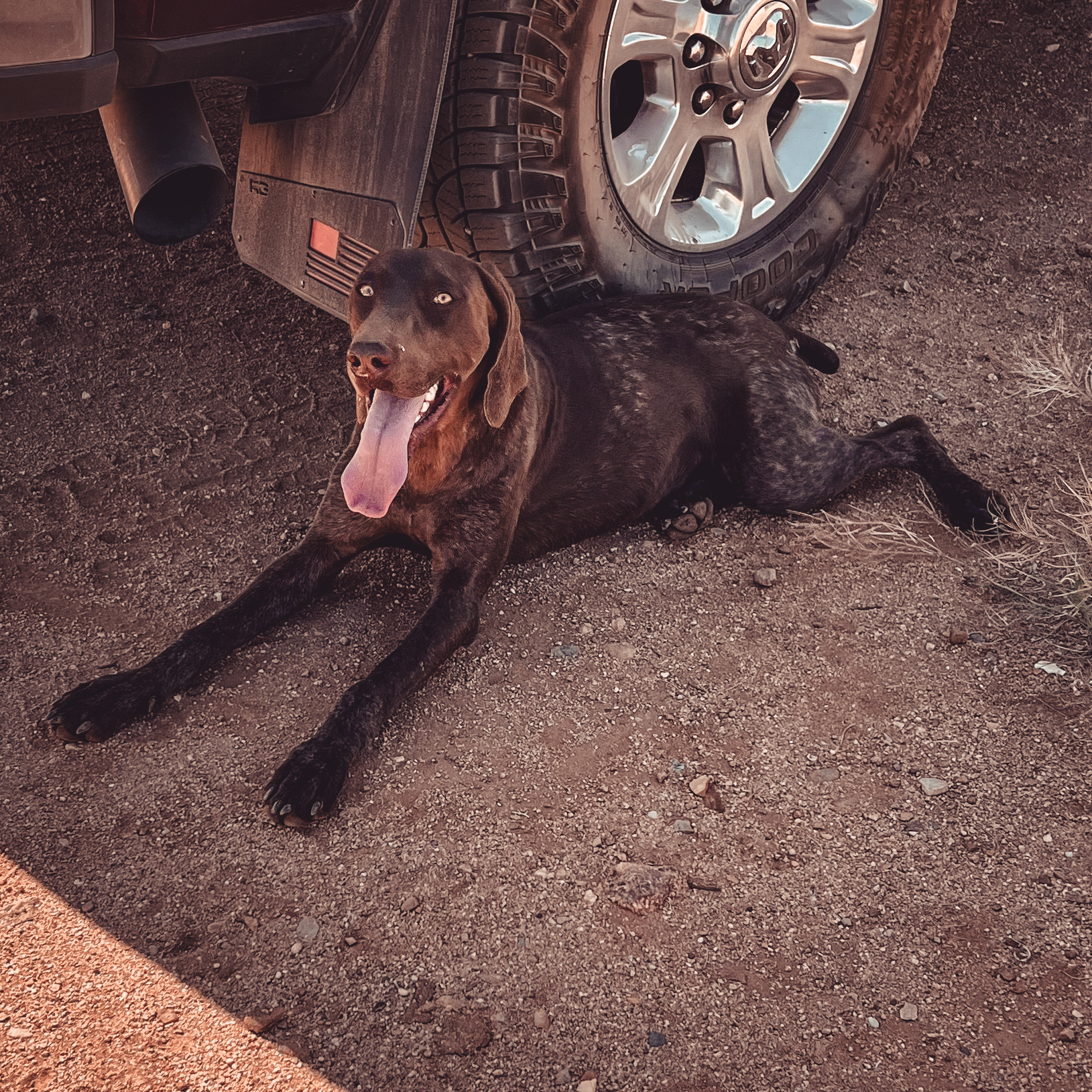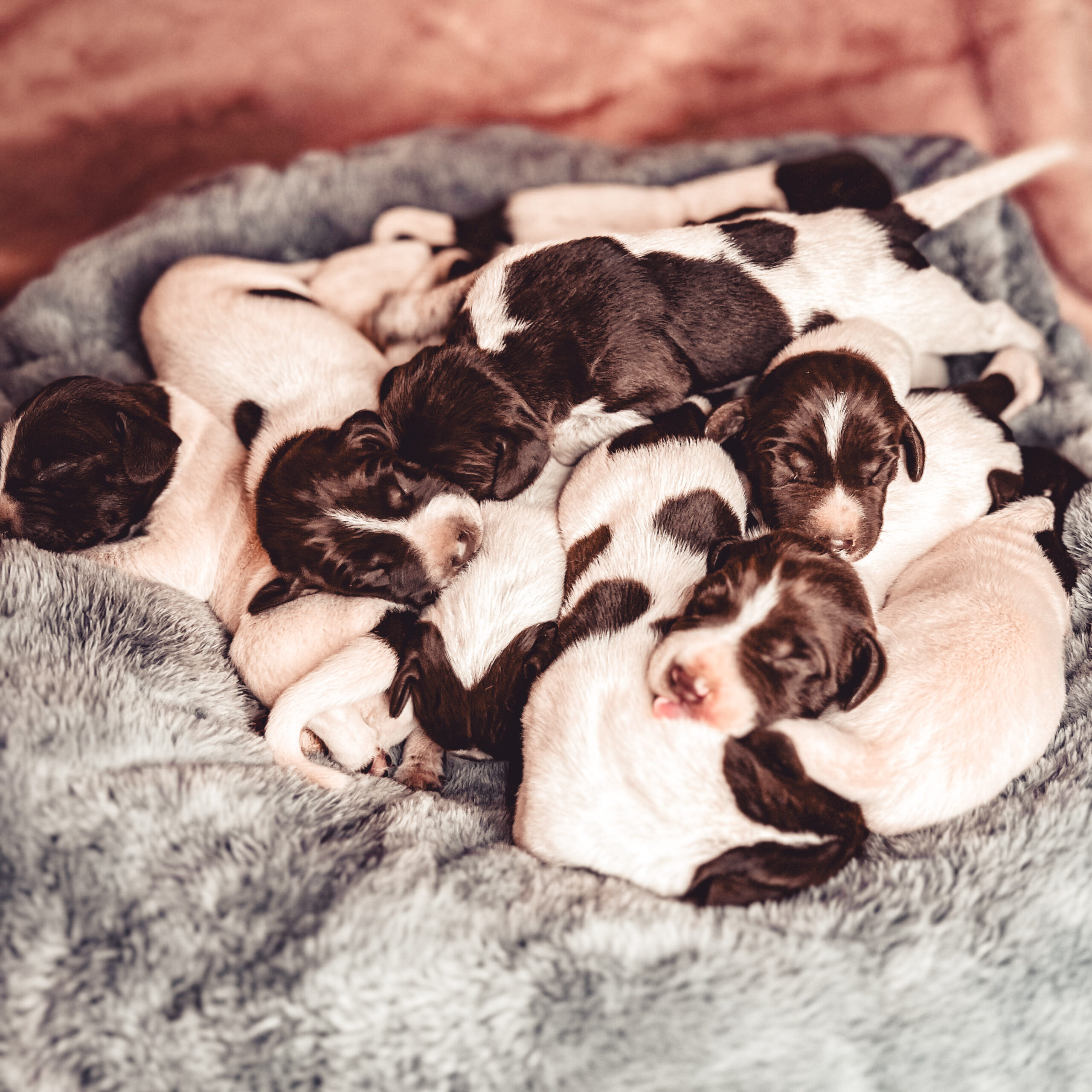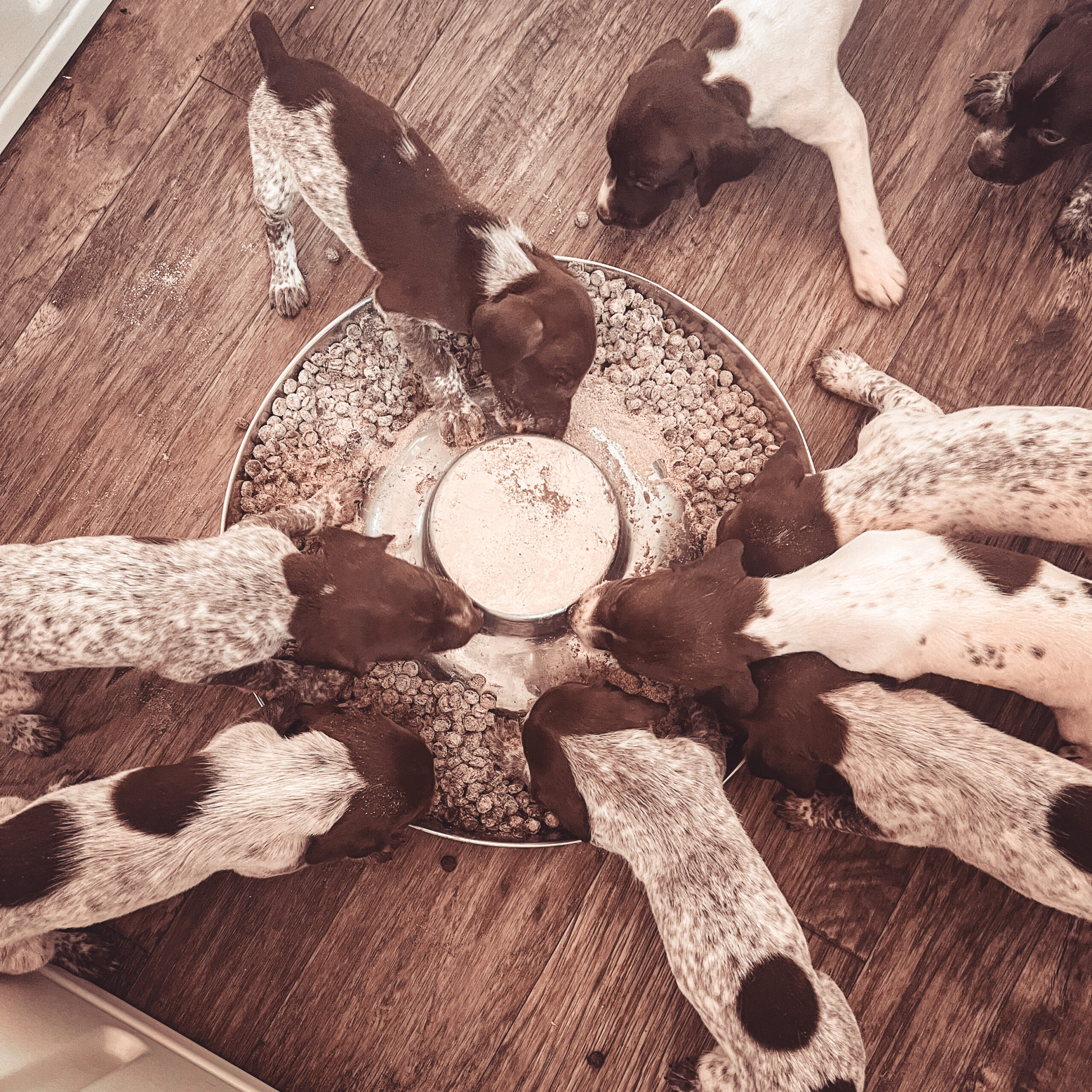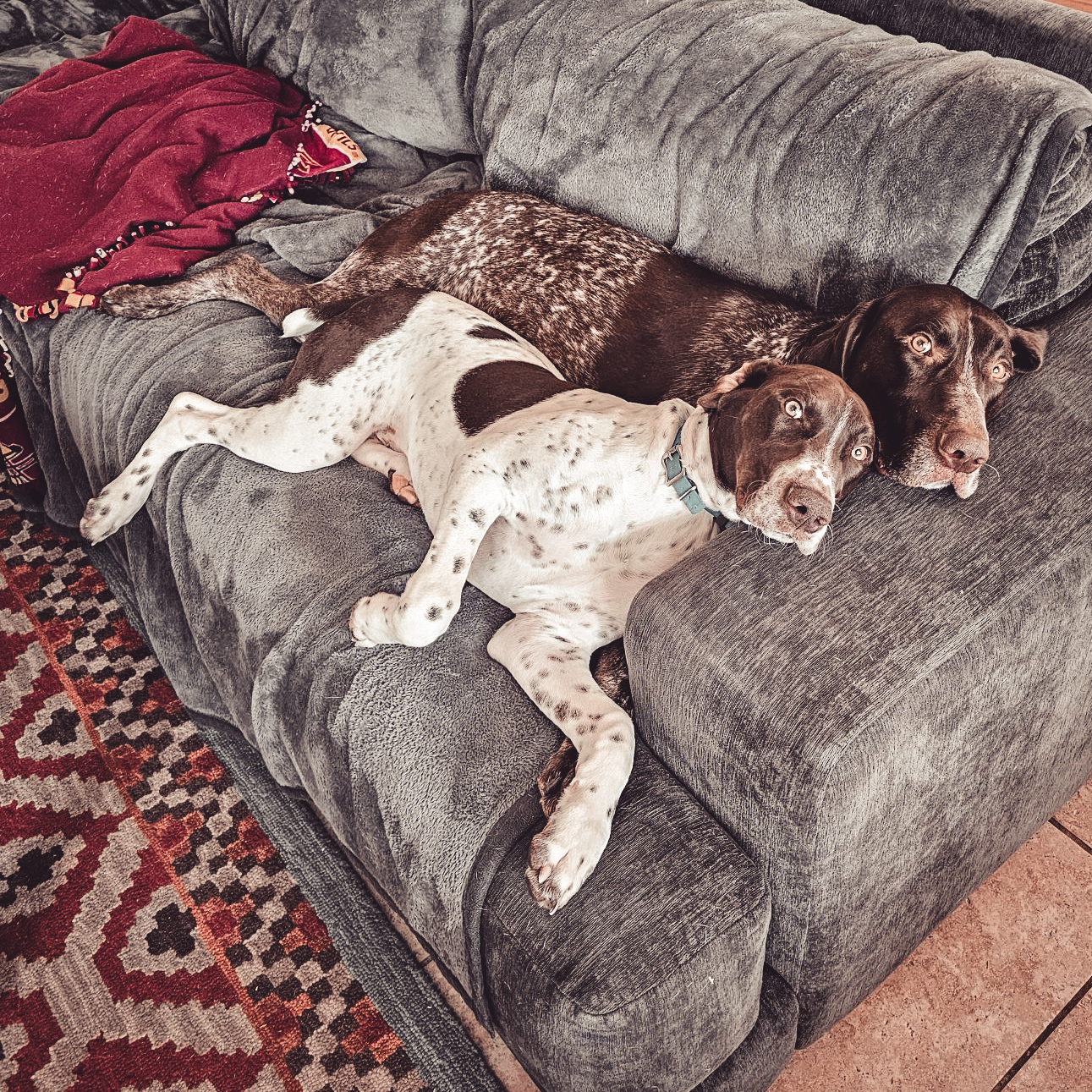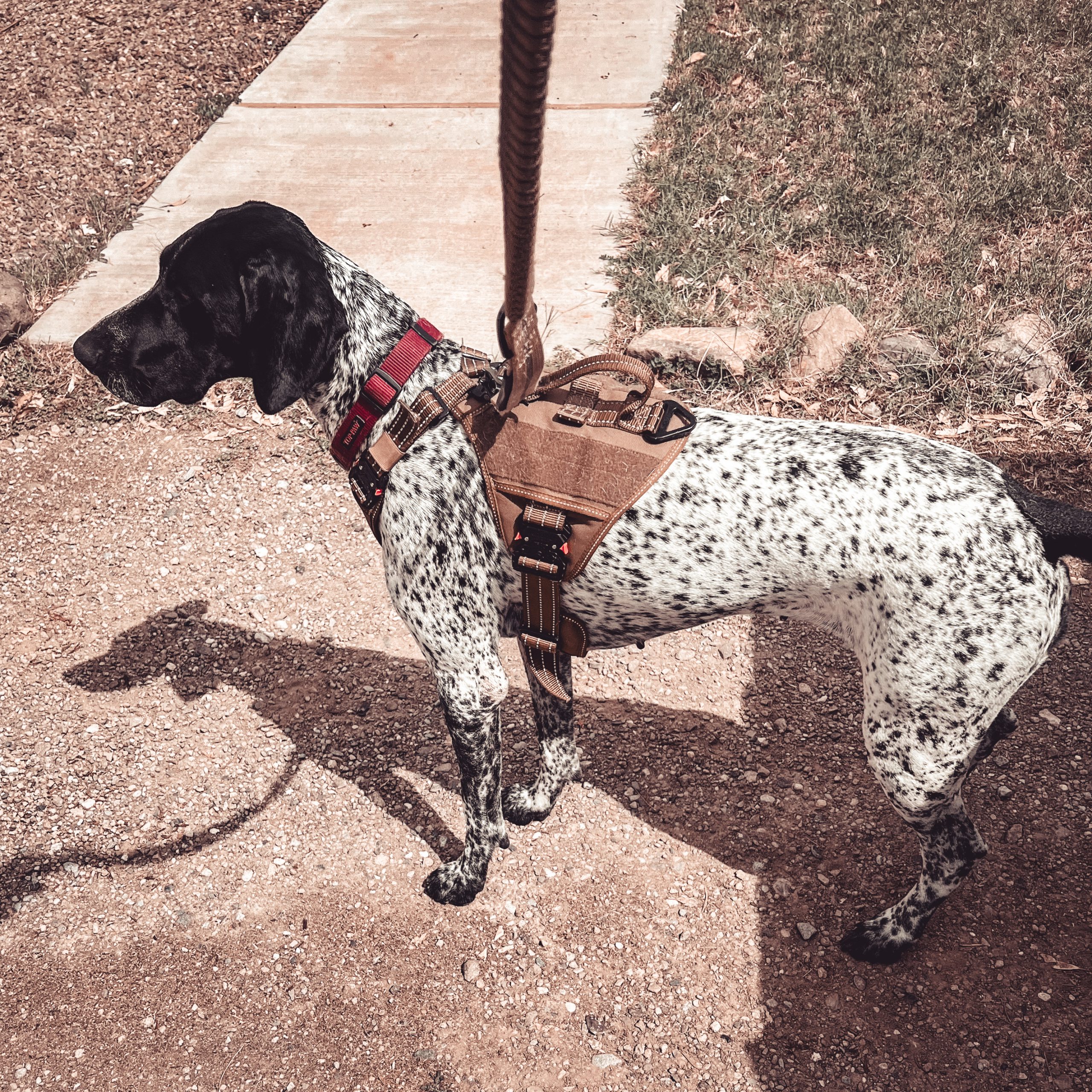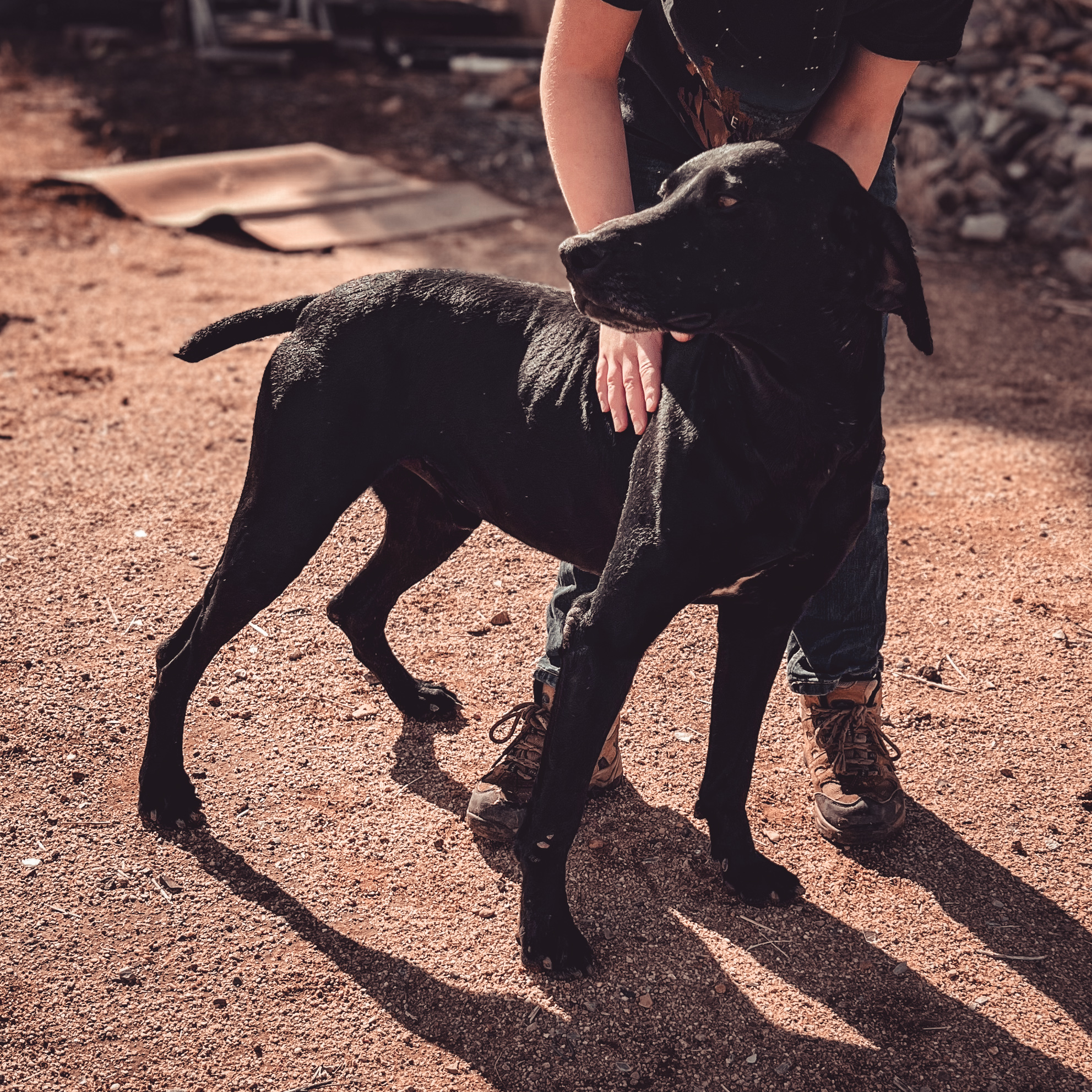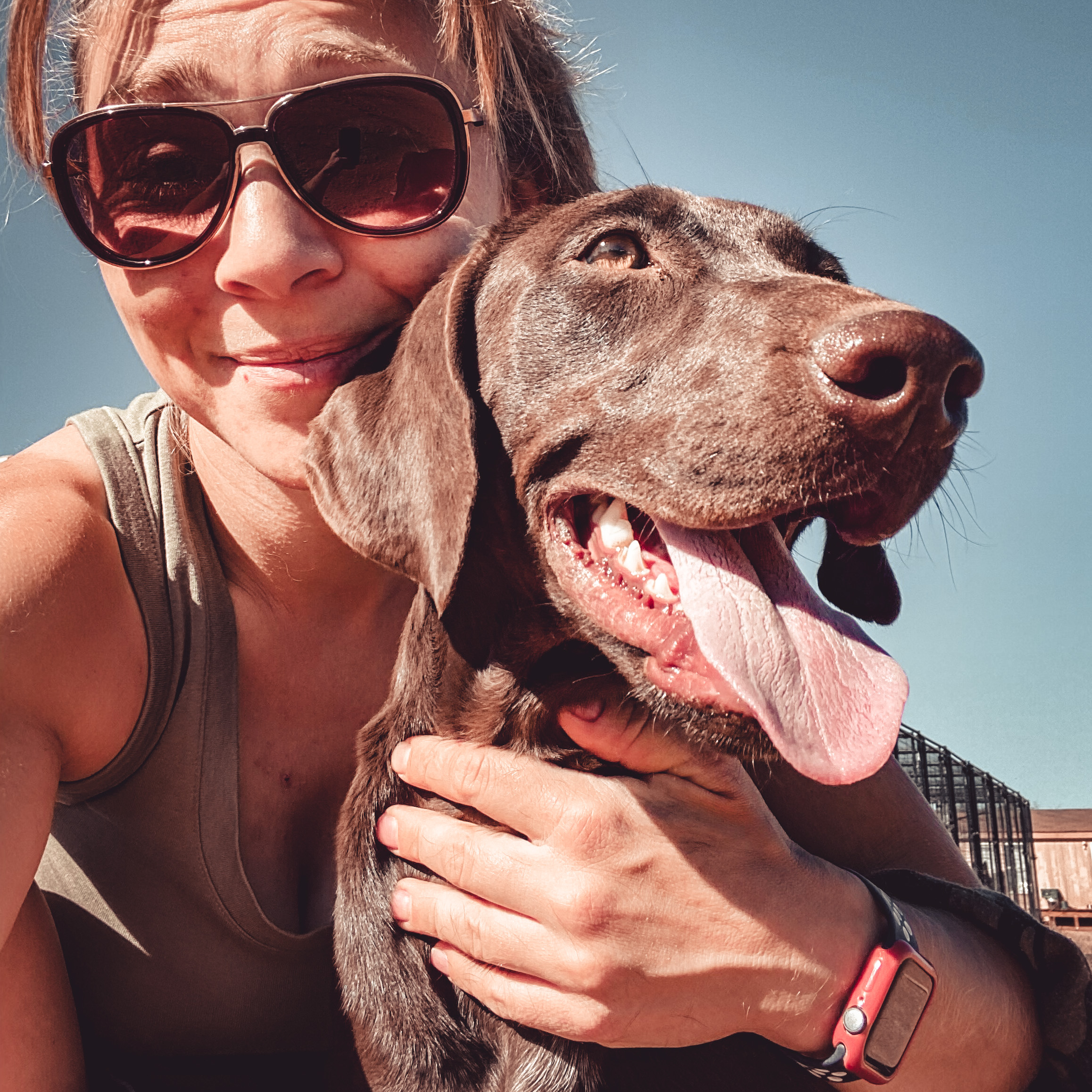Curious about the different colors and patterns found in GSPs? Wondering about what roaning, ticking, and patching are? Let’s dive in and I’ll explain it and the genetics behind it!
What are the different Colors?
GSPs come in two colors: black and liver. The liver is essentially a chocolate. Most GSPs will have some variation of white or roan on them, even the solid GSPs will often have a roan or white brisket (or chest) patch, often with toes that are roan or white.
Black is dominant over liver, which means if the dog carries the black gene then it has to carry at least one copy. While a liver dog carries no copies of the black gene (or else it would be black!).
This way, you’ll know that no matter what, if you breed two liver dogs together, you cannot make a black dog. However, if you breed a black and liver dog together, you can get either color, however, you would only get black if the black parent had only black genes and no liver genes.
Liver is technically considered a “hypopigmentation” of black, meaning that the dog is black, but has another gene (found on the B locus) that will desaturate the black color to a brown.
There is some talk of black dogs hunting better, but that doesn’t make sense, it’s just color genetics, drive and temperament are very separate. The theory came about because black GSPs aren’t allowed in AKC show rings (go figure), so the backwards conclusion was that if they were black, then they hunted. But the correct way to think of this was that a black color made the dog a better hunter, it was that kennels that carried black were probably hunting kennels because they obviously were not show kennels.
There are some dilute genes you may find in GSPs, but this is not standard and you won’t find them in the Bear Paw breeding program.
Interestingly, when doing genetic testing, most of my GSPs carry tan points, similar to the tan points you’d see on a Rottweiler or a Doberman, however, all GSPs I work with have the dominant Black K locus point on their genetics. This dominate black gene will mask tan points. In order to see tan points, you’d need the recessive K locus, often referred to as the KyKy genetics. Just a little fun fact.
Black GSP Coloring
Liver GSP Coloring
Different Patterns of GSPs
There are two patterns found in GSPs, they are solid or piebald. Solid dogs are as they sound, primarily solid colored, similar to a lab, but usually they have a roan/white chest patch, sometimes it extends to the belly or on the toes. The reason you’ll see this on a solid is because very often the solid dog will carry a copy of the piebald gene, but we’ll discuss that in a second.
The piebald gene leads to patching. This can be as minimal as a nearly solid head or can be so heavy the dog is more than half covered in patches. In order for a dog to be piebald, he needs to receive two copies of the piebald gene. This is a recessive gene, so if the dog only receives one copy of the piebald gene, then it will be solid. Which also means that if a dog is solid, he either carries no piebald or only a single copy of the piebald gene. It is impossible for a piebald dog to make a solid dog, BUT if bred to a solid dog, then it is possible the offspring can be solid from the other parent.
Solids and Colors are unrelated genes, meaning whether a dog is solid or not, it has no bearing on if the dog is black or liver.
Solid GSPs
Piebald GSPs
Roan, White, or Ticked?
First, let’s separate roan from white. On piebald dogs, and the non-solid parts of solid dogs, there is white or roan. Roan is the 50/50 dispersal of white and colored hairs on a dog, this is the basecoat of the dog. So a dog will either be a roan or a white.
You will not see white or roan where the dog is solid or patched. Roan, white, and even ticking can only be seen where a dog is not patched or solid. You can think of solid as a bit of a giant, blanket patch.
As far as genetics are concerned, it’s fairly straightforward, the roan gene is dominant over the white gene. But a roan dog can carry the white gene, however, a white dog cannot carry a roan gene (if it did carry a roan gene, then it would be roan).
Although the dominance is straightforward, there appears to be different roan densities, some are so dark you can barely tell they’re roan and not solid, while with others, it’s so light you’re not sure if they’re actually a heavily ticked white dog. Boot is a light roan, while Rusty’s genes carry a darker roan.
With ticking, it appears to be a little co-dominant, meaning the ticking will be heavier if they get the heavy ticking gene from both parents, while lighter if it comes from only one parent. Given the ticking in GSPs, especially our Bear Paw lines, none of the GSPs will be without some ticking.
Here are some examples:
Roan Basecoat
White Basecoat
Here are a few tricky ones:
White Basecoat, Heavily Ticked
Light Roan Basecoat
Dark Roan
Heavily Ticked White
Puppies Have No Roan or Ticking When Born
Remember how in 101 Dalmatians Cruella Deville was mad because all the baby Dalmatian puppies didn’t have spots? Same this with GSPs! They are born without their ticking and roaning, that slowly comes in over time. The solid dogs and the patches on the piebald dogs will be there at birth and will not change.
Look at these two photos, this is the same litter a few days after birth and 4 weeks later!
2 Days Old
4 Weeks Old
Look at the difference in this white puppy from 6 weeks old to 9 months old!
5 Weeks Old
9 Months Old
Here are all the different GSP Patterns, Colors, Basecoats, and Ticking
White Basecoat, Lightly Ticked – Liver
White Basecoat, Lightly Ticked – Black
White Basecoat, Heavily Ticked – Liver
White Basecoat, Heavily Ticked – Black
Roan Basecoat, Ticked – Liver
Roan Basecoat, Ticked – Black
Solid Liver
Solid Black

